Quick Answer
Yes, CO2 can build up in full face snorkel masks if they are poorly designed or improperly used. These masks cover your entire face and include a built-in snorkel, offering a wide view and easier breathing than traditional gear. However, this design can trap exhaled CO2 inside the mask if the ventilation system fails or the mask doesn't fit correctly. To stay safe, you need to understand how these masks work, what risks they pose, and how to use them properly. This guide explains CO2 buildup in full face masks and ways to protect yourself while snorkeling.

How CO2 Builds Up in Full Face Masks
The Science Behind Breathing
Your body creates carbon dioxide every time you breathe. When you inhale, your lungs take in oxygen that your body needs. As your cells use this oxygen, they produce CO2 as a waste product. Each time you exhale, your body pushes out this CO2. This natural process works well in open air, but in enclosed spaces like a snorkel mask, the CO2 needs a clear path to escape.
Why Air Flow Matters in Snorkel Gear
Regular air circulation prevents CO2 from collecting in your breathing space. In traditional snorkel gear, exhaled air moves up and out through the snorkel tube quickly. The fresh air then flows in through the same tube when you inhale. This simple design helps maintain healthy oxygen levels and removes CO2 efficiently.
Full Face Mask Components
A full face mask consists of several key parts:
- A sealed face chamber that covers from your forehead to your chin
- A breathing chamber with separate channels for inhaled and exhaled air
- One or more valves that control air flow
- A snorkel tube connected to the top of the mask
- Straps that secure the mask to your head
Full Face Snorkel Mask Adults-G2RISE SN01 Purple-Pink
How Mask Design Affects Your Breathing
The design of full face masks can create problems with air flow. The larger breathing chamber means more space where CO2 can collect. Some masks don't separate incoming and outgoing air well enough. When this happens, you might breathe in some of the CO2 you just exhaled. Poor valve placement or defective valves can also trap CO2 inside the mask instead of letting it escape.
Temperature changes inside the mask can also affect air flow. As you breathe, the warm air from your lungs meets the cooler mask surface. This can cause fogging and moisture buildup, which might block air passages and make breathing harder.

What Causes CO2 Build-Up in Snorkel Masks
Mixed Air Flow Channels
The biggest risk comes from masks that don't separate incoming and outgoing air properly. When the same channel carries both fresh air and exhaled breath, you end up rebreathing some CO2. This happens because the exhaled air gets trapped in the mask's chamber instead of being pushed out completely. Quality masks prevent this by using separate channels with one-way valves.
Blocked or Restricted Airways
CO2 builds up when air can't flow freely through the mask. Common blockages include:
- Channels that are too narrow
- Sharp bends in air tubes
- Clogged or sticky valves
- Unnecessarily large breathing chambers that trap air
- Water trapped in the breathing space
Poor Mask Fit
A mask that doesn't match your face shape creates dangerous air pockets. If it's too loose, water seeps in and blocks air flow. If it's too tight, the seal warps and creates gaps where it should be airtight. Both problems lead to irregular air flow and CO2 accumulation in parts of the mask.
Manufacturing Defects
Low-quality masks often have built-in flaws that trap CO2:
- Defective valves that don't seal properly
- Cracked or warped air channels
- Weak seals that let water in
- Brittle plastics that break easily
- Missing or poorly placed ventilation holes
Worn-Out Components
Even good masks can develop problems over time that cause CO2 buildup:
- Salt and sun damage to plastics
- Stretched or loose straps that affect the seal
- Valves that stick open or closed
- Degraded seals that no longer keep water out
- Scratched or damaged surfaces that disrupt air flow
Regular checks of your mask's condition and proper maintenance will prevent many of these problems. The safe choice is to replace any mask that shows signs of wear or damage rather than risking CO2 buildup during your swim.

Warning Signs and Dangers of CO2 Buildup in Full Face Masks
Early Warning Signs
Your body sends clear signals when CO2 levels rise too high. Remove your mask immediately if you notice:
- Feeling dizzy or lightheaded
- Trouble catching your breath
- Unusual tiredness or weakness
- Racing heartbeat
- Headache or pressure in your head
- Feeling anxious or uneasy
Severe Symptoms
More serious signs of CO2 exposure require immediate action:
- Confusion or difficulty thinking clearly
- Muscle twitches or tremors
- Vision changes or blurred sight
- Strong urge to remove the mask
- Feeling of panic
- Tingling in fingers and toes
Physical Effects of CO2 Exposure
High CO2 levels affect your body in several ways:
- Your blood becomes more acidic
- Less oxygen reaches your brain and muscles
- Your breathing gets faster but less effective
- Your heart works harder to compensate
- Your judgment becomes impaired
Dangers While Snorkeling
CO2 buildup creates serious risks in the water:
- Sudden panic can lead to unsafe behavior
- Poor judgment might make you ignore warning signs
- Confusion can make it hard to find the surface
- Physical weakness can make swimming difficult
- Impaired vision can disorient you underwater
If you experience any symptoms, stay calm and remove your mask right away. The effects of CO2 exposure usually clear quickly in fresh air, but they can be extremely dangerous if ignored while swimming.
Safety Tips for Using Full Face Snorkel Masks
Check Your Mask Before Swimming
Your pre-swim check is simple but important. The mask's seal, straps, valves, and frame need careful inspection for any damage. Small problems with the mask can lead to trouble in the water. The snorkel tube must connect firmly to prevent water from entering your mask.
Adjust Your Mask Correctly
A well-fitted mask feels comfortable and stays sealed. The mask should sit evenly on your face without too much pressure. Both straps need equal tightness to keep the mask balanced. When fitted correctly, you can breathe normally and turn your head while the mask stays in place.
Keep Your Mask Clean
Salt and sand can damage your mask if left uncleaned. A good rinse with fresh water after each use keeps the mask in good condition. All parts of the mask need to dry completely before storage. A cool, dry storage spot away from sunlight helps your mask last longer.
Replace Parts When Needed
Regular use will wear out mask parts over time. The clear plastic might get scratched or cloudy, while the seals can become stiff. Old valves often need replacement before other parts. Any unusual smells or constant fogging mean it's time for new parts or a new mask.
Practice Emergency Removal
The ability to remove your mask quickly matters for safety. The fastest way is to pull the mask forward and up to break the seal. Practice this motion in shallow water with someone nearby. Regular practice helps you stay calm if you need to remove the mask quickly while swimming.
Good care keeps your mask safe to use. Watch for any changes in how your mask works and fix problems right away.

When Not to Use Full Face Masks
In Rough Water Conditions
Full face masks aren't suitable for rough seas or strong currents. The larger surface area catches more water force, which can strain your neck. Ocean areas with high waves also pose extra risks, as water can more easily enter the snorkel tube. Murky water requires frequent mask clearing, which is harder with a full face design.
Below Surface Level
These masks work best for surface snorkeling in calm, shallow waters. Deep water creates extra pressure on the mask's large surface. The increased breathing effort at depth also raises your CO2 levels faster. Most full face masks aren't designed for free diving or any activity below 10 feet.
If You Have Health Conditions
People with breathing problems should avoid full face masks. Asthma, chronic bronchitis, or other respiratory conditions increase the risk of CO2 buildup. Heart conditions also make these masks risky because of the extra breathing effort they require. Claustrophobia can worsen in a full face mask's enclosed space.
During Active Swimming
The masks don't work well for swimming laps or water exercise. Fast breathing during active swimming can overwhelm the mask's ventilation system. Water splashing from rapid movement often enters the snorkel tube. The mask's weight and drag also make vigorous swimming uncomfortable.
If You're New to Snorkeling
New swimmers and children need simpler snorkel gear. The complexity of full face masks makes emergency responses harder for beginners. Young children's faces are often too small for a proper seal. First-time snorkelers should master basic masks and snorkels before trying full face designs.
The safest choice is traditional snorkel gear when conditions aren't ideal. Your safety matters more than the convenience of a full face mask.

Prevent CO2 Buildup in Full Face Masks!
Full face snorkel masks need careful attention to prevent CO2 buildup. Before using one, check if it suits your health, swimming ability, and water conditions. If you choose a full face mask, maintain it well, know the warning signs, and remove it immediately if breathing feels difficult. When in doubt, traditional snorkel gear offers a safer choice for your water activities.
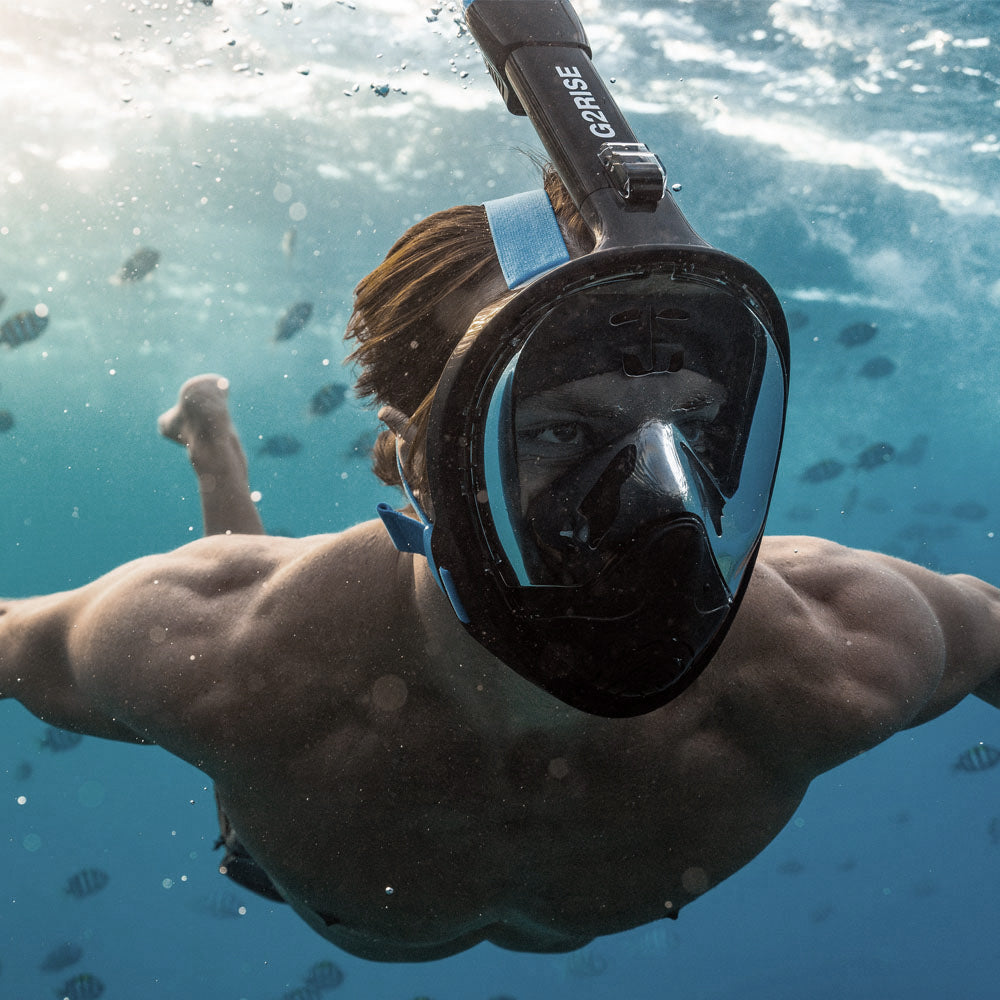
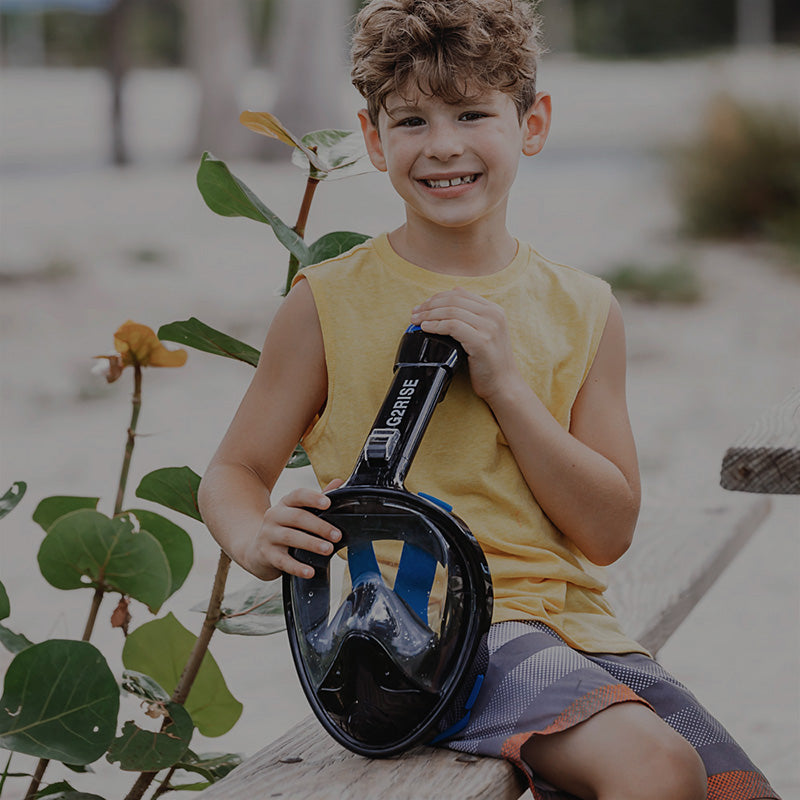
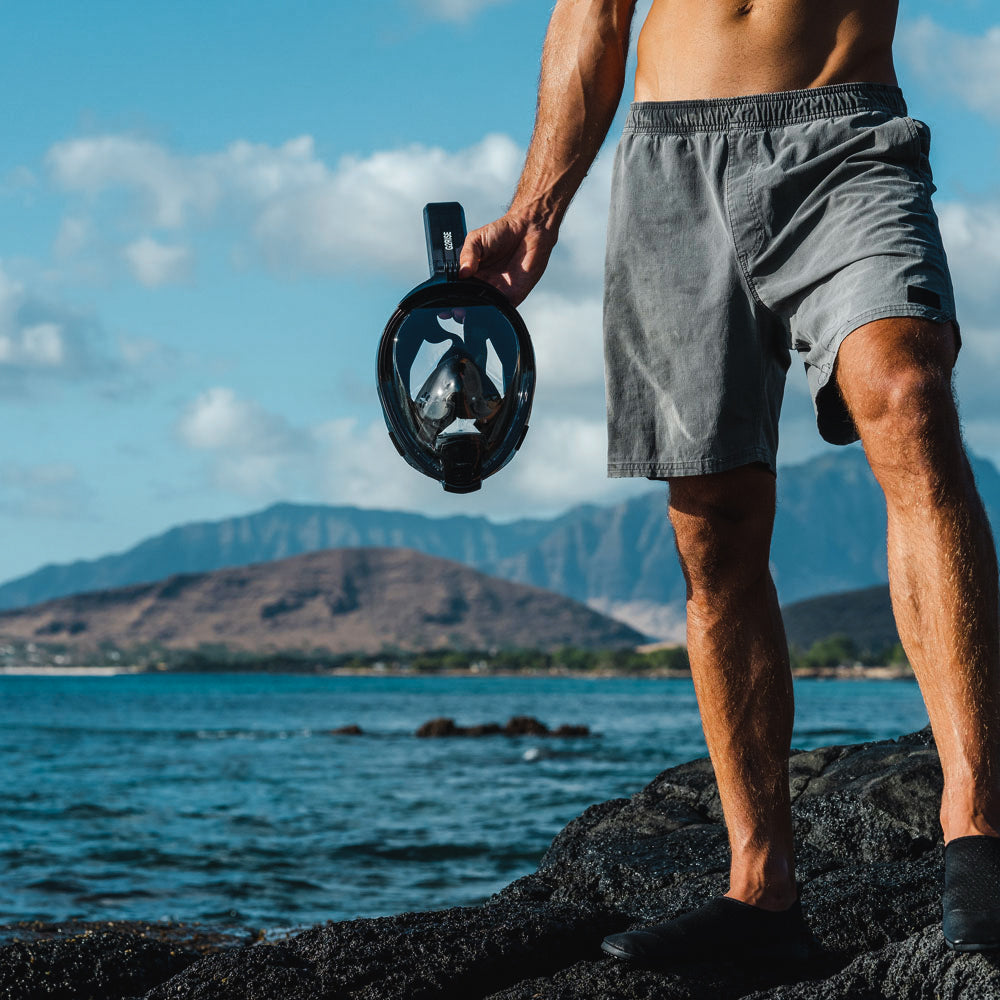

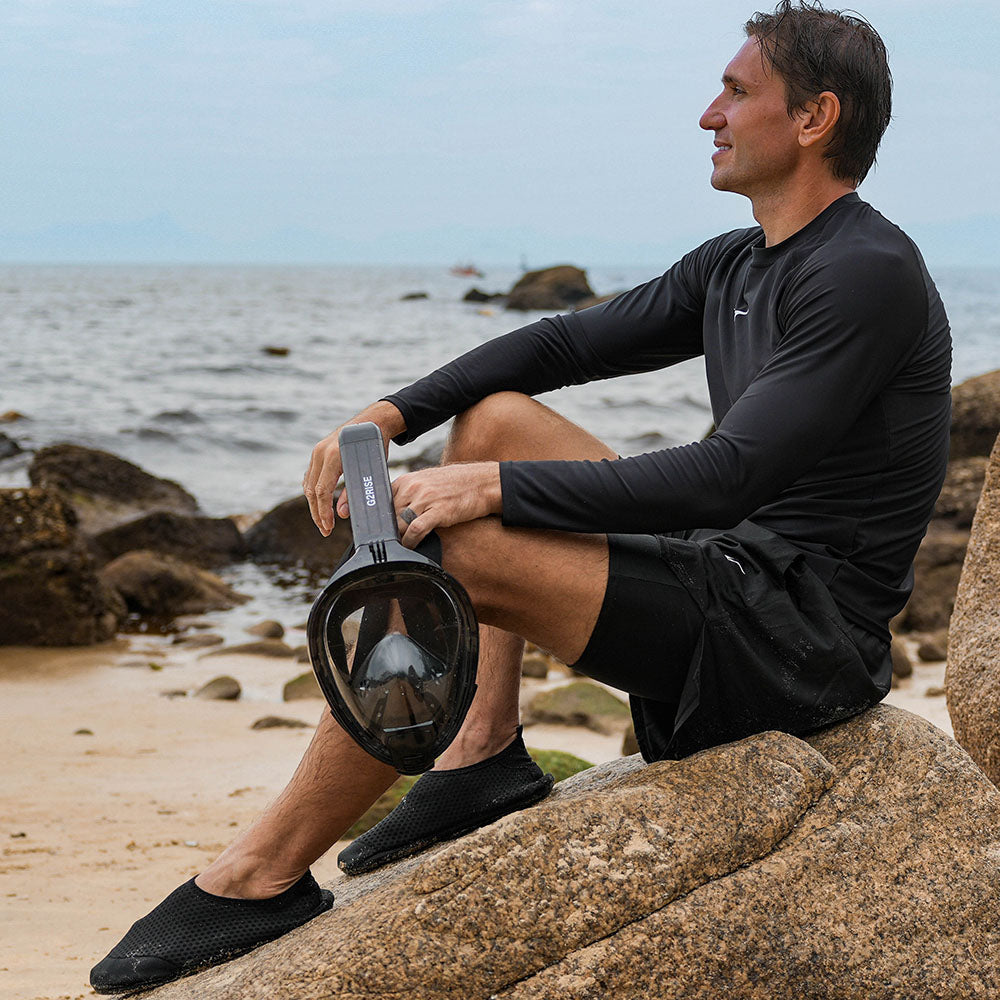



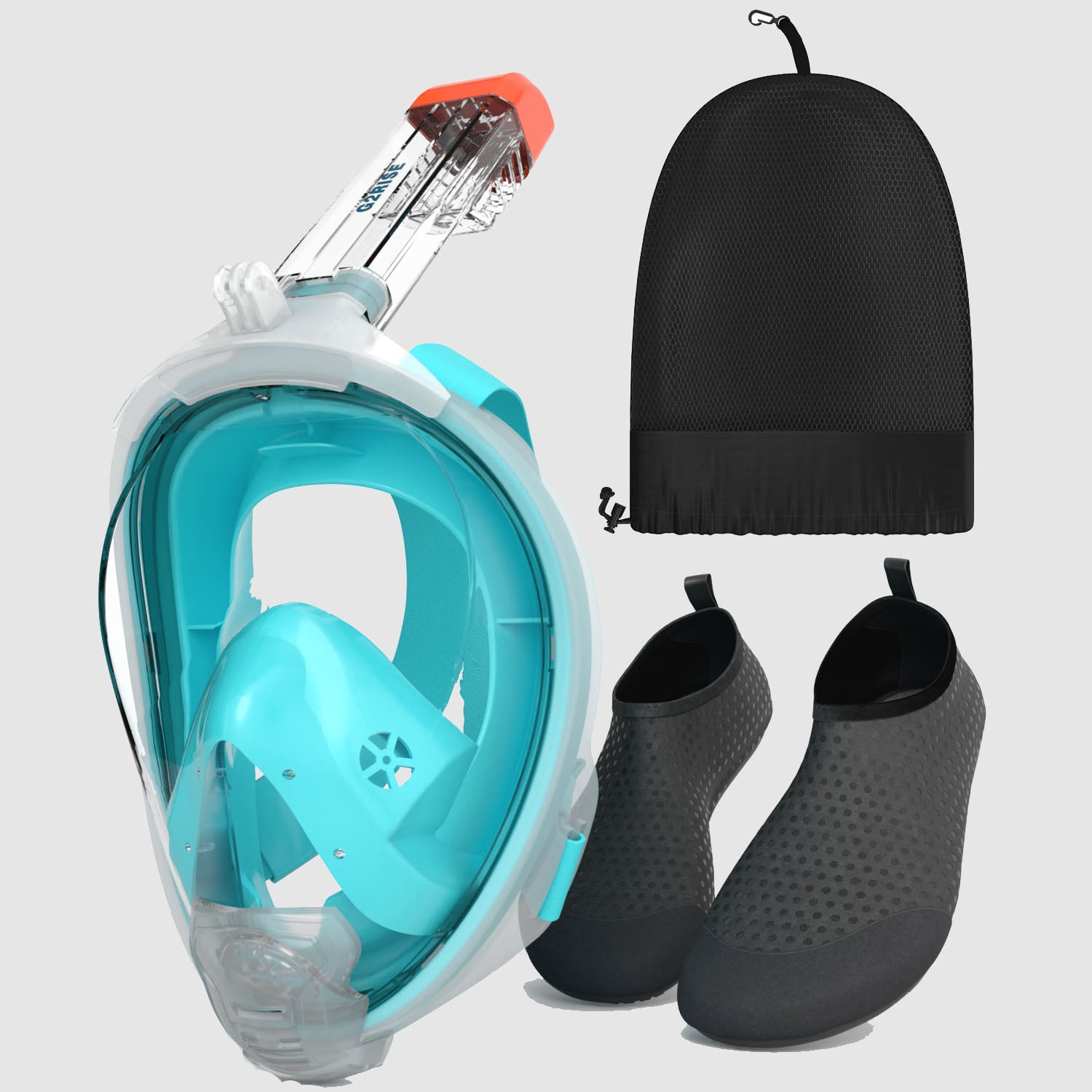
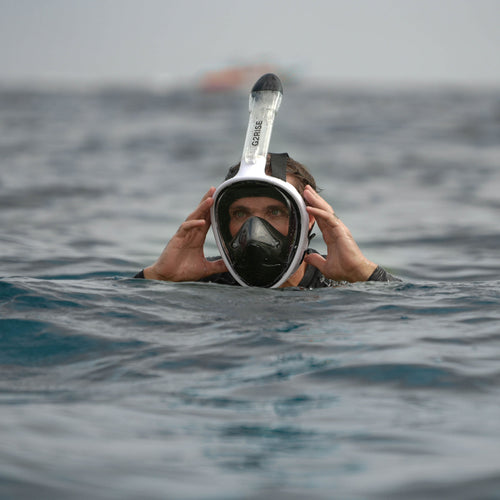
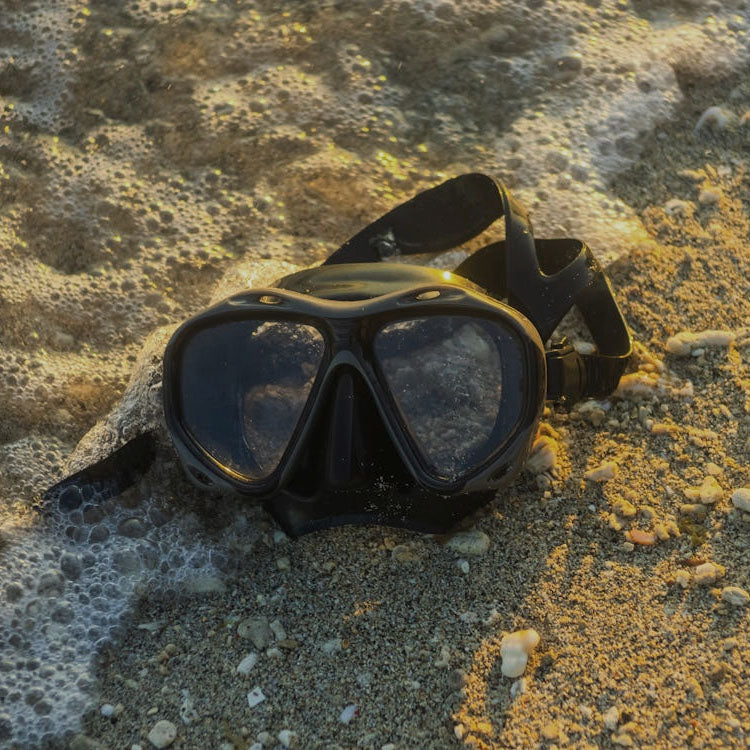
Leave a comment
This site is protected by hCaptcha and the hCaptcha Privacy Policy and Terms of Service apply.